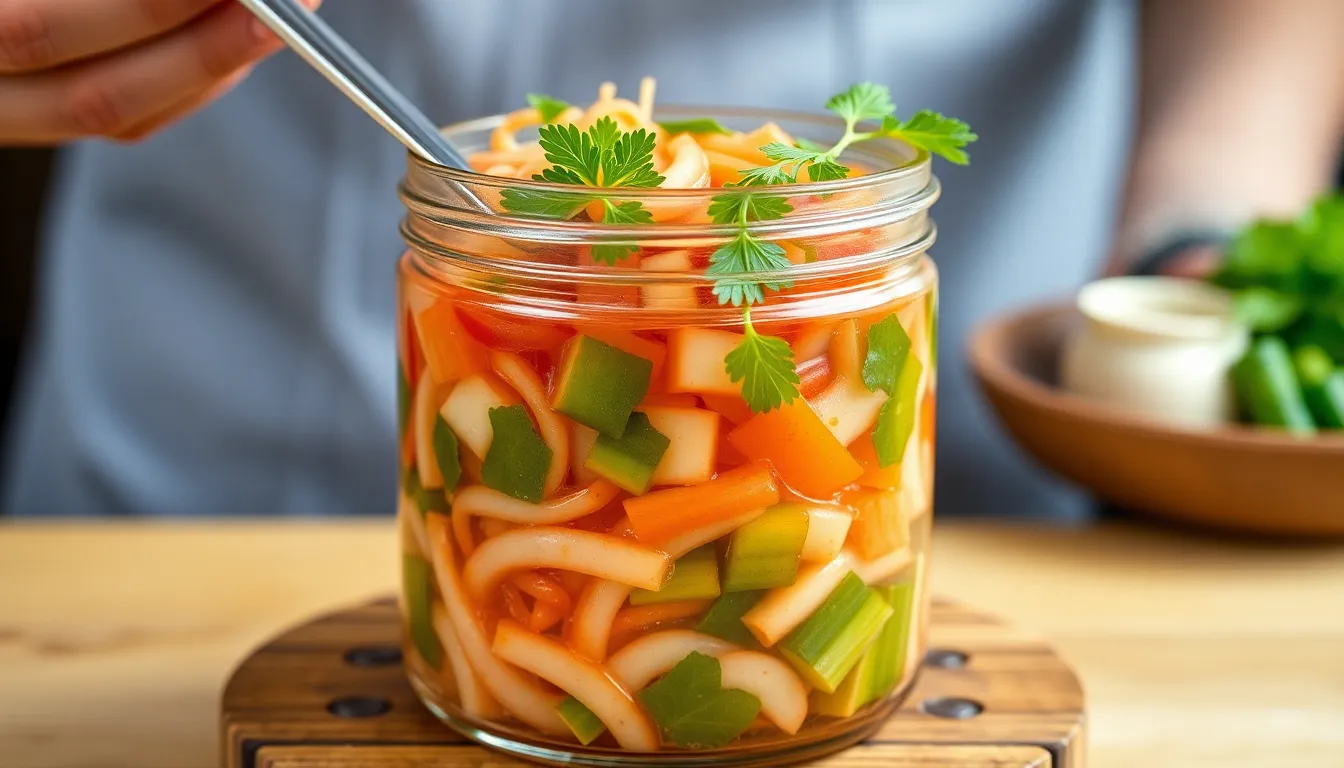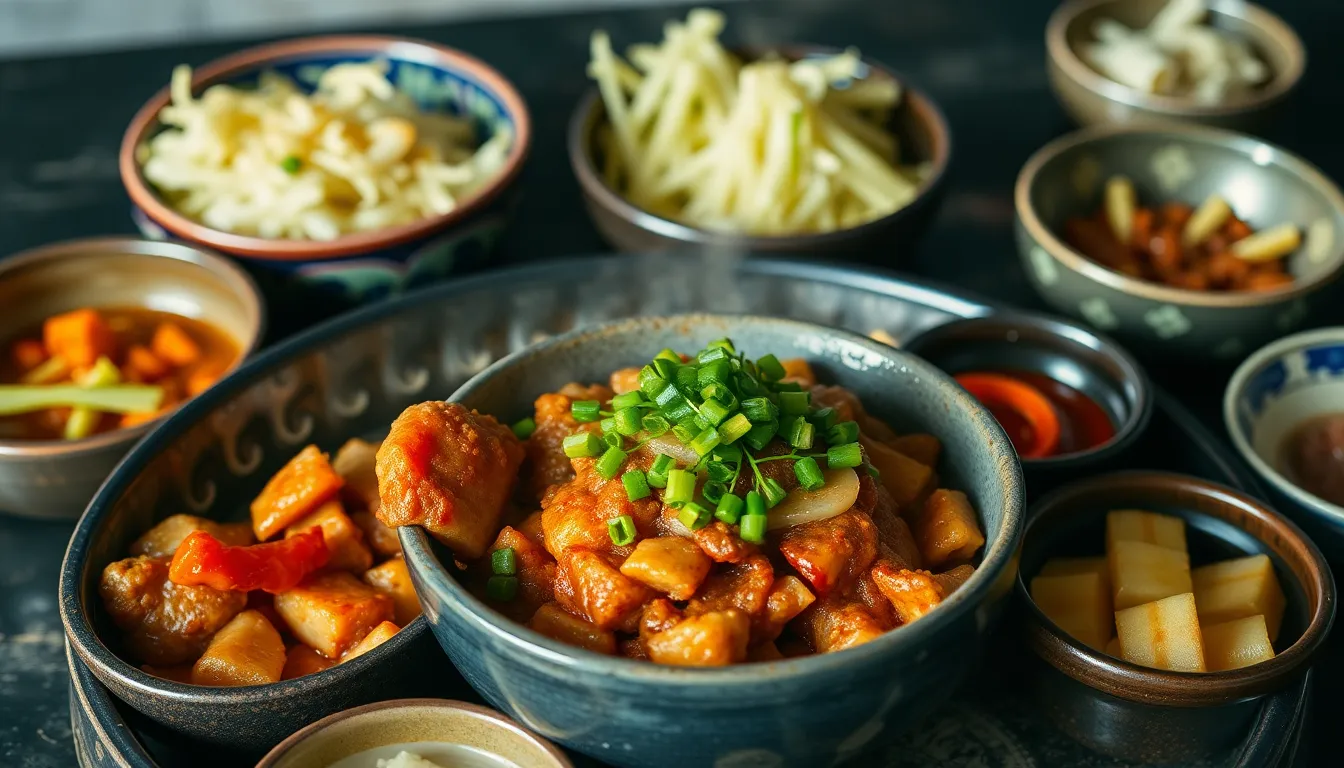Fermentation Nation: How to Craft Your Own Kimchi Like a Pro
Welcome to the world of fermentation, where flavors mingle and health benefits abound! In this post, we’ll dive deep into the art and science of kimchi-making, a culinary tradition that has been cherished for centuries in Korean culture. Not only will we explore the vibrant flavors and the cultural significance of kimchi, but we’ll also uncover its immense health benefits. Get ready to embark on an exciting journey that will transform your kitchen into a fermentation haven, allowing you to craft authentic kimchi right at home!
Introduction: The Art and Science of Fermentation
Kimchi is more than just a side dish; it’s a symbol of Korean heritage, representing the spirit of preservation and the joys of communal dining. This dish is typically made from fermented vegetables and a blend of seasonings, resulting in a unique combination of flavors that tantalize the taste buds.
But why should you incorporate kimchi into your diet? The answer lies in the remarkable health benefits that fermented foods offer. Rich in probiotics, kimchi can improve gut health, boost your immune system, and even enhance your mood. Plus, making kimchi at home is not only rewarding but also allows you to customize your flavors and ingredients.
Are you ready to discover the secrets behind crafting your own kimchi like a pro? Let’s dive in!
Section 1: Understanding Kimchi: A Flavorful Tradition
1.1 What is Kimchi?
Kimchi is a traditional Korean dish made from a variety of fermented vegetables, most commonly napa cabbage and radishes. The fermentation process enhances the flavors, adding depth and complexity that is unmatched by fresh vegetables. There are countless varieties of kimchi, each showcasing unique ingredients and flavors, making it a versatile component in many meals.
The role of fermentation in kimchi is crucial, as it creates a symbiotic relationship between beneficial bacteria and the ingredients, resulting in a tangy, umami-rich delicacy that’s packed with flavor.
1.2 The Nutritional Powerhouse: Why You Should Include Kimchi in Your Diet
Including kimchi in your regular diet can provide numerous health benefits:
- Probiotics: Fermentation produces beneficial bacteria that aid digestion and support gut health.
- Nutrient-Dense: Kimchi is rich in vitamins A, B, and C, as well as antioxidants that combat inflammation and promote overall health.
- Low Calorie: A serving of kimchi is low in calories, making it a fantastic option for those looking to maintain or lose weight.
- Boosts Immunity: The fermentation process enhances the bioavailability of nutrients, helping to strengthen the immune system.
Section 2: Essential Ingredients: The Heart of Your Kimchi
2.1 The Core Ingredients: A Deep Dive
To create authentic kimchi, you’ll need to gather a few essential ingredients:
- Napa Cabbage: The main ingredient, which absorbs flavors and provides a crunchy texture.
- Radishes: Adds crunch and a peppery flavor that balances the dish.
- Garlic: Infuses an aromatic quality and enhances the health benefits.
- Ginger: Adds warmth and depth to the flavor profile.
- Chili Pepper: Provides the signature heat, which can be adjusted to your preference.
Each of these ingredients plays a crucial role in not only the flavor but also the fermentation process, working together to create that signature tangy taste!
2.2 Optional Add-Ins: Customizing Your Kimchi Experience
While traditional kimchi has its core ingredients, there are endless possibilities when it comes to customization:
- Seafood: Anchovies or shrimp paste can add a savory depth to your kimchi.
- Fruits: Pineapple or pear can add a hint of sweetness, creating a unique balance of flavors.
- Additional Vegetables: Carrots, green onions, and cucumbers provide added crunch and flavor.
Feel free to experiment with these add-ins to create a kimchi that suits your taste buds!
2.3 HTML Table: Ingredient Comparison
| Ingredient | Traditional Kimchi | Popular Alternatives |
|---|---|---|
| Napa Cabbage | Crunchy, absorbs flavors well | Kale, Bok Choy |
| Radishes | Pungent, peppery flavor | Daikon, Carrots |
| Garlic | Aromatic, enhances health benefits | Shallots, Garlic Powder |
| Chili Pepper | Provides heat | Red Pepper Flakes, Sriracha |
Section 3: The Fermentation Process: Crafting Kimchi Like a Pro
3.1 Preparation: The First Steps Toward Flavor Explosion
The preparation stage is vital for crafting delicious kimchi. Here’s how to get started:
- Wash the Vegetables: Rinse your napa cabbage and radishes thoroughly under cold water.
- Cut the Vegetables: Chop the cabbage into quarters and slice the radishes into thin pieces.
- Salt the Cabbage: Generously sprinkle salt between the layers of cabbage, ensuring each leaf is coated.
- Let it Wilt: Allow the salted cabbage to sit for 1-2 hours, which helps to draw out moisture.
- Rinse and Drain: After wilting, rinse the cabbage under cold water to remove excess salt and drain well.
This wilting process is essential, as it helps the vegetables retain their crunch during fermentation.
3.2 The Perfect Spice Mix: Creating Your Kimchi Paste
Your kimchi’s flavor truly comes alive with the right spice mix. Here’s how to make a basic kimchi paste:
- Start with the Base: Combine gochugaru (Korean red pepper flakes), minced garlic, and ginger in a bowl.
- Add Liquid: Mix in fish sauce or soy sauce, and a bit of sugar to balance out the heat.
- Adjust Heat: For a milder kimchi, reduce the amount of gochugaru; for extra heat, add more!
Mix until you achieve a paste-like consistency. You can also add water to thin it out if necessary.
3.3 Packing It Up: Fermentation Techniques
Once your kimchi paste is ready, it’s time to pack everything up for fermentation:
- Mixing: In a large bowl, combine your wilted cabbage, radishes, and spice paste. Use your hands (wear gloves) to mix thoroughly.
- Packing: Transfer the mixture into clean glass jars, pressing down to eliminate air pockets. Leave some space at the top for expansion during fermentation.
- Sealing: Seal the jars tightly, but ensure they are not airtight to allow gases to escape.
Section 4: The Waiting Game: Fermentation Timeline and Tips
4.1 Timing is Everything: How Long Should You Ferment?
Fermentation times can vary based on temperature and personal taste preferences. Here’s a quick overview:
- 1-2 Days: Mild, fresh flavor; perfect for those new to kimchi.
- 3-5 Days: Tangy, well-developed flavor; a good balance for most palates.
- 1 Week or More: Strong, deeply fermented flavor; ideal for kimchi lovers!
Check your kimchi daily, tasting it to see how the flavor develops. When it reaches your desired taste, it’s ready for refrigeration.
4.2 Storage Solutions: Keeping Your Kimchi Fresh
Proper storage is key to maintaining the quality of your kimchi:
- Refrigeration: Store your kimchi jars in the fridge where it can continue fermenting slowly.
- Airtight Containers: If you want to prolong freshness, transfer to airtight containers after fermentation.
- Signs of Spoilage: If your kimchi develops an off-smell, discoloration, or excessive mold, it’s best to discard it.
Section 5: Enjoying Your Kimchi: Serving Suggestions and Recipes
5.1 From Side Dish to Star: How to Serve Kimchi
Traditionally served as a side dish, kimchi can elevate a variety of meals. Here are some serving suggestions:
- As a Side Dish: Serve alongside grilled meats or rice.
- In Tacos: Use kimchi as a zesty topping for soft or hard-shell tacos.
- In Rice Bowls: Add kimchi to rice bowls for an extra kick of flavor.
Feel free to get creative and incorporate kimchi into any meal for that extra zing!
5.2 Kimchi Beyond the Bowl: Creative Recipes to Try
Here are a few quick and delicious recipes to get you started using your homemade kimchi:
- Kimchi Fried Rice: Stir-fry rice with veggies, eggs, and your favorite kimchi for a hearty meal.
- Kimchi Pancakes: Combine kimchi with flour and egg to create savory pancakes, perfect for breakfast or a snack.
Remember to share your kimchi creations on social media and inspire others to join in the fermentation fun!
Conclusion: Join the Fermentation Revolution
As we conclude this delicious journey through the world of kimchi-making, it’s clear that crafting your own kimchi at home is both enjoyable and rewarding. Not only do you get to satisfy your taste buds with unique flavors, but you also reap the numerous health benefits of fermented foods.
So why not roll up your sleeves and start your own kimchi adventure today? Gather your ingredients, follow our guide, and join the fermentation revolution—your taste buds will thank you!




